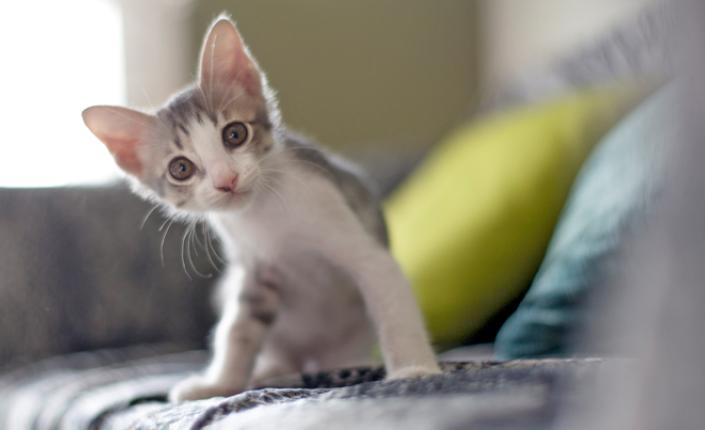
Whether you’re a first-time pet parent or have welcomed more than one four-legged friend into your life, bringing a new puppy or kitten home is always exciting!
Puppies and kittens are naturally curious. Watching your newest family member navigate the world can be adorably entertaining. So it’s important to encourage safe exploration by pet-proofing your home. Thankfully, this process doesn’t have to be complicated.
Give your home the once-over and start thinking like a puppy or kitten. Look at each room through the eyes of your new bundle of joy and assess whether there are any potential dangers. Remove the hazards until you’re sure that your pet has a safe space to play, learn, and grow.
If you need help getting started, check out our pet-proofing checklist below.
- When it comes to chewing cables, cords, and wires, kittens aren’t the only guilty party. Teething puppies have also been known to chew on wires. Keep cables out of sight, clean up messy cords, and secure lamps and other appliances that have tempting electrical wires. If you can, unplug electrical devices when you’re not using them.
- Move clothing and shoes to the closet and always keep the door closed. Make storing laundry in a closed hamper a habit and store small accessories in drawers that your pet cannot easily access.
- Puppies and kittens can be sneaky! During your once-over, look for spots behind or under furniture that can become hiding spots. Block off these areas in order to keep your newest family member where they should be.
- When it comes to furniture, it’s not just the big things like appliances that you need to look out for. Look closely at the ground and underneath furniture to remove small, loose items that can become choking hazards (hair elastics, coins, rubber bands, twist ties, etc.).
- Take some time to tidy up around the house. Store extra blankets and pillows in decorative chests or containers when they’re not in use. Put away stray items like phones and other digital devices that may look like nifty chew toys to a curious pup.
- The garage holds a number of potentially dangerous materials from fertilizers to antifreeze. You may remember that some pets are attracted to the sweet scent of antifreeze and can become poisoned once they ingest it. The best places to store hazardous substances are up high on a shelf or inside a cabinet (a locked cabinet would be ideal).
- New pet parents with a flair for gardening should be careful of the types of plants found in their yard and kept in their home. For example, lilies can cause kidney failure in cats even if a small part of the flower is ingested. Remove toxic plants or move them to a spot where your pet can’t reach them.
- Keep a lid on things. Make sure that any container with a lid (hamper, garage can, even the toilet seat and lid) has been properly closed. One tumble into an open container can leave your poor pet trapped!
- For kitty climbers, the cords used for blinds can pose a significant risk. Tie them into a knot and tuck them away, out of reach.
- Tinsel makes for an eye-catching Christmas tree and your puppy or kitty is sure to take notice. With the holidays coming up, you may want to consider whether any of your decorations pose a dangerous risk to your pet.
- When you bring your new puppy or kitty home, they won’t know the difference between a pet toy and a common household object. Try keeping your pet busy with a plethora of toys just for them, you can redirect their attention and hopefully keep them out of trouble.
- Consider using a crate for your new puppy; a crated puppy is a safe puppy. Household dangers can become even more dangerous to an unsupervised puppy. Looking for tips on crate training? Check out our article here.
By changing some of your own habits, you can provide a safe home for your puppy or kitten. If you have children in your home, make sure that they know the rules around tidying up. Once everyone’s onboard, the easier it will be to start pet-proofing. Good luck and welcome home to your new friend!